Backpacking Water Purification: Beyond Filters
By Sarah Coupal & Aaron Owens Mayhew, MS, RDN, CD
Updated January 6, 2024
This post may contain affiliate links.
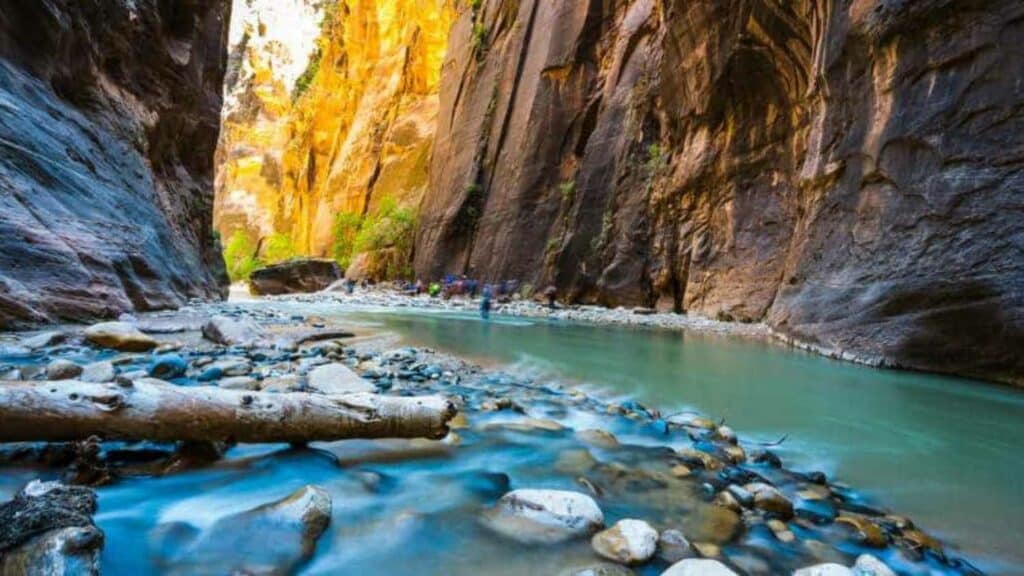
Filtering | UV Sterilization | Boiling | Chemical Treatments
There are very few places in the backcountry where the water is safe to drink without purification. You probably already know that you should filter it to avoid unpleasant consequences. What many people don’t know, however, is that there are several ways to purify water while backpacking beyond filtering. Each has its advantages, and some have safety considerations that you should be aware of. Curious about the other ways to purify water for backpacking trips? Read on for an overview of each method.
The four main backpacking water purification methods include filtering, UV light sterilization, boiling, and chemical treatment. We will also discuss the use of natural water purification methods for backpackers.
Filtering
You can find countless filters online, which are common backpacking water purification methods. They vary widely in the degree of work involved, price, and weight, which will not be the focus of this post. Combining a filter with a chemical treatment will ensure safe water, as filters do not remove viruses, and most chemical treatments do not kill cryptosporidium, a type of parasite.1 Below are the details for the Sawyer Squeeze Mini (a common backpacking water filter) to use for comparison to the other backpacking water purification methods we’ve listed below.
Sawyer Mini Squeeze Filter
- Weight: 1.4 oz, 3.5 oz with accessories
- Effective against: Bacteria and parasites (including cryptosporidium), microplastics
- Time required: Depends on the sediment of the water. For clear water, it takes about 2 minutes to filter 1 liter.
- Cost: $15-$30
- Uses: 100,000 gallons
- Storage requirements: Backwash before storage
UV Sterilization
UV light kills bacteria, viruses, and protozoa. Steripens can only be used in clear water, so you must first filter dirty water through a bandana or specialized filter (like the Steripen Adventurer Opti). Sediment can block the rays and keep the water from being fully purified. Some steripens require batteries, and others are rechargeable via a USB port.
Katadyn Steripen
- Weight: 4.9 oz
- Effective against: Bacteria, viruses, and protozoa (including cryptosporidium)
- Time required: 90 seconds to purify 1 liter
- Cost: $130
- Uses: 8000

Boiling
Boiling is a foolproof water purification method and a simple way to purify water if you are already heating water for cooking. If your water has debris, you can filter it out using a bandana, but this does not affect the efficacy of boiling. Boiling can also use a lot of fuel.
Jet Boil Canister Stove
- Weight: Depends on the weight of your stove and fuel.
- Effective against: Bacteria, viruses, and parasites (including cryptosporidium)
- Time required: Depends on your stove’s boil time. JetBoil stoves can boil 1 liter in 200 seconds. Once it’s boiling, wait 1 or 3 minutes if you are above 6500 feet. Then, wait for it to cool down to a temperature suitable for drinking.
- Cost: Varies
- Uses: Lifetime of your stove.

Chemical Treatments
Most chemical treatments are easy to use, lightweight, and relatively inexpensive water purification methods. They are a good choice for the beginner hiker or backpacker who does not want to invest in another piece of gear just yet but are also used by some thru-hikers. This left us wondering about the safety of their long-term use for thru-hiking.
After a deep dive into the limited literature and available information, here are some things to consider.
Iodine for Water Purification
Iodine is one of the most classic chemical treatments for water purification. Potable Aqua makes the most popular tablets, but you can also buy iodine as a liquid. The glass bottles that the tablets come in are not allowed in some wilderness areas. It is less effective if the water has a lot of solids in it. You can filter it through a bandana before adding the iodine.
The color and taste of iodine water can be off-putting for some people. Consider taste- and color-neutralizing tablets as well if you decide to use iodine for purification.
Potable Aqua Iodine Tablets
- Weight: 1.2 oz (2.3 oz with taste- and color-neutralizing tablets)
- Effective against: Bacteria, viruses, and some parasites (not cryptosporidium)
- Time required: 35 minutes
- Cost: $6-10 for one bottle
- Uses: 2 tablets per liter. Each bottle contains 50 tablets, which is enough to purify 6.5 gallons of water.
- Storage considerations: Must keep completely dry and out of direct sunlight for maximum effectiveness. For this reason, it’s best to store it in its original glass bottle. Effectiveness decreases after 1 year of opening the bottle.
Safety: The upper recommended amount of daily iodine is 1.1 mg. At intakes above 1.7 mg per day, adverse effects have been reported.1 Two tablets will release 16 mg of iodine, although the more you consume, the less your body absorbs.2 Many experts recommend not using iodine for water purification for an extended period of time (i.e.,> 3 weeks). However, one review stated that you can use iodine for water purification for up to 3 months safely if you don't have any underlying health conditions. This is because the use of iodine may reveal underlying thyroid disease.2 There have been cases where very prolonged consumption (i.e., 2+ years) of iodine-treated water has led to iodine overload and thyroid dysfunction.3,4
Fun fact: If you use iodine tables while cold soaking your meals, the iodine reacts with the starch in your food and the water will turn blue. This color fades over time and does not affect the color of your final meal.

Chlorine Methods of Water Purification
Sodium Hypochlorite
Using sodium hypochlorite (bleach) for water purification is a less common method among campers and backpackers, but many still use it. You probably already have bleach at home, and it is effective for water purification. Only use bleach without added ingredients (scents, dyes, thickeners).
Bleach

- Weight: 1.5 oz or more, depending on the size of your dropper bottle
- Effective against: Bacteria, viruses, and some parasites (not cryptosporidium)
- Time required: 30 minutes
- Cost: 5-10 cents per ounce (~$5 for 80 oz), plus the cost of a dropper bottle.
- Uses: Add 2 drops of 6-8.25% bleach per liter (1/8 tsp per gallon). 1 oz of bleach can purify 24 gallons (6% bleach) or 48 gallons (8.25% bleach) of water. You might need to add more if the water is very cloudy (or filter it through a piece of cloth beforehand).
- Storage considerations: Bleach loses potency as it sits because the chlorine evaporates.
Safety: Bleach should be diluted properly, but its active ingredient, chlorine, is effective for water purification.5 Chlorine is rapidly neutralized in your mouth and stomach to chloride (also found in table salt), which is harmless.6 Chlorine has been recognized as safe for over 100 years and is used in municipal water treatment.7
Chlorine Dioxide
Many different products use chlorine dioxide for water purification, including Katadyn, Potable Aqua, and Aquamira. Chlorine dioxide comes in both tablet and liquid forms.
Katadyn Micropur Chlorine Dioxide Tablets
- Weight: 0.4 oz for 30 tablets
- Effective against: Bacteria, viruses, and parasites, including cryptosporidium
- Time required: 4 hours
- Cost: $17 for 30 tablets
- Uses: 1 tablet per liter; 20 tablets can purify 5.3 gallons
- Storage considerations: Come individually wrapped. Have a shelf life of 4 years.
Safety: Katadyn and Potable Aqua say that their products are for occasional use. The active ingredient is chlorine, which is regularly used in municipal water treatment. The upper limit for chlorine dioxide in treated water in the UK is 0.5 mg/L, and 1 mg/L in the US.8 These tablets release 4 ppm, which is equivalent to 0.15 mg/L.
Aquamira Two-Part Liquid Water Treatment
- Weight: 3 oz
- Effective against: Bacteria, viruses, and parasites, including cryptosporidium
- Time required: 20-35 minutes*
- Cost: $15
- Uses: 7 drops from each bottle per liter. 2 bottles can treat 30 gallons
- Storage considerations: Shelf life of 4 years.
- Other considerations: You have to mix the two liquids in a small cap that is easy to lose. Before adding the treatment to your water, you must also wait 5 minutes after mixing the two parts together.
Safety: The active ingredient in Aquamira is also chlorine. Aquamira is diluted to 5 ppm in your water, which is equivalent to 0.19 mg/L, still well below the UK's more strict upper limit of 0.5 mg/L. *While the Aquamira instructions do recommend waiting only 30 minutes, it can take up to 4 hours to kill all of the crypto depending on the temperature and cloudiness of the water. If you are concerned about crypto, it's advisable to wait longer and/or filter your water before treating.

Hypochlorous Acid
Hypochlorous acid is another form of chlorine. Aquatabs water purification tablets are used around the world by organizations such as the Red Cross and UNICEF for water purification.
Aquatabs
- Weight: 0.1 oz for 30 tablets
- Effective against: Bacteria, viruses, some parasites (not cryptosporidium), biofilms
- Time required: 30 minutes
- Cost: $8
- Uses: 1 tablet works for up to 2 liters of water. 30 tablets can purify 16 gallons.
- Storage considerations: 5-year shelf life
- Other considerations: Filter out sediment from the water using a bandana.
Safety: Like sodium hypochlorite and chlorine dioxide water treatment methods, these tablets also release chlorine. They release 2.6 mg of chlorine per liter. The EPA sets the upper limit on free chlorine in water at 4 mg/L,9 so these tablets are within safe levels.
Natural Method of Water Purification
Grapefruit Seed Extract

There has been some discussion about the use of grapefruit seed extract as a natural water purification method. While it does have antimicrobial properties, internet sources recommend widely varying amounts to disinfect water. There has not been much research into its efficacy as a method of water purification. One study found that it must be diluted 1:512 to be nontoxic to human cells.10 Some online sources, including a manufacturer’s website, recommend diluting it less than this, which is slightly concerning.
Furthermore, grapefruit can interact with many medications (such as Warfarin), leading to adverse health effects.11 It also increases the acidity of water, creating a strong, unpleasant taste.
All in all, more research needs to be done before saying that grapefruit seed extract is a safe method for water purification.

Which water purification method should you choose?
There are a lot of different backpacking water purification methods. Your choice will likely vary depending on the length of your trip, your budget, and the water quality in your area. Chemical methods are light, compact, and great for purifying large volumes of water or carrying them as a backup method of water purification on backpacking trips.
DISCLOSURE: Some of the links on this page are affiliate links, which means we may receive a modest commission if purchases are made through those links. This adds no cost to our readers and helps us keep our site up and running. Our reputation is our most important asset, so we only include links for products we use ourselves.
Did you find this post helpful?
Pin it and share it with your fellow hikers.
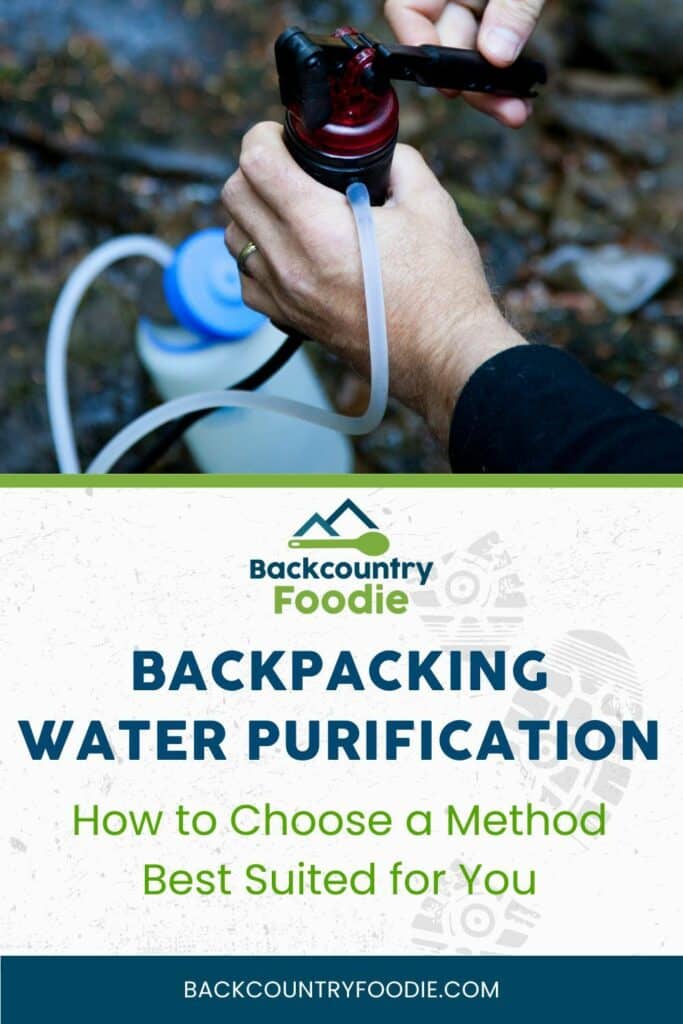
Are you new to our blog?
Consider checking out these posts:
- Best Backpacking Foods for Energy
- What to Eat & Drink After Hiking: Our 3 Favorite Tips
- Backpacking Nutrition: Fueling Further Using the Goldilocks Approach
- How to Pack Food for a Canoe Camping Trip
ABOUT THE AUTHORS:
Sarah Coupal is a Dietetic Intern at Illinois State University mentored by Aaron. She holds a BS in Nutritional Sciences from Cornell University and spent two summers as the Trails Food Coordinator for the Adirondack Mountain Club. She enjoys hiking/backpacking, canoeing, cross-country skiing, and running in her free time.
Aaron Owens Mayhew, MS, RDN, CD, is a registered dietitian and ultralight long-distance backpacker with over 20 years of nutrition and backpacking experience. She’s also the founder and owner of Backcountry Foodie, an online ultralight recipes and meal planning platform for backpackers. She also enjoys teaching hikers about backpacking nutrition via virtual masterclasses, YouTube videos, and podcast episodes. You can follow Aaron’s adventures in the kitchen and the backcountry via Instagram and Facebook.
References:
1. Institute of Medicine (US) Panel on Micronutrients. Dietary Reference Intakes for Vitamin A, Vitamin K, Arsenic, Boron, Chromium, Copper, Iodine, Iron, Manganese, Molybdenum, Nickel, Silicon, Vanadium, and Zinc. Washington (DC): National Academies Press (US); 2001. 8, Iodine. Available from: https://www.ncbi.nlm.nih.gov/books/NBK222323/
2. Backer H, Hollowell J. Use of iodine for water disinfection: iodine toxicity and maximum recommended dose. Environmental Health Perspectives. 2000;108(8):679-684. doi:10.1289/ehp.00108679
3. Sang Z, Chen W, Shen J, et al. Long-Term Exposure to Excessive Iodine from Water Is Associated with Thyroid Dysfunction in Children. The Journal of Nutrition. 2013;143(12):2038-2043. doi:10.3945/jn.113.179135
4. Pearce EN, Gerber AR, Gootnick DB, et al. Effects of Chronic Iodine Excess in a Cohort of Long-Term American Workers in West Africa. The Journal of Clinical Endocrinology & Metabolism. 2002;87(12):5499-5502. doi:10.1210/jc.2002-020692
5. Elmaksoud SA, Patel N, Maxwell SL, Sifuentes LY, Gerba CP. Use of Household Bleach for Emergency Disinfection of Drinking Water. Journal of Environmental Health. 2014;76(9):22-25.
6. Clasen T, Edmondson P. Sodium dichloroisocyanurate (NaDCC) tablets as an alternative to sodium hypochlorite for the routine treatment of drinking water at the household level. International Journal of Hygiene and Environmental Health. 2006;209(2):173-181. doi:10.1016/j.ijheh.2005.11.004
7. Kgabi N, Mashauri D, Hamatui N. Utilisation of Water Purification “Tablets” at Household Level in Namibia and Tanzania. Open Journal of Applied Sciences. 2014;04(14):560. doi:10.4236/ojapps.2014.414055
8. Gray NF. Chlorine Dioxide. In: Percival SL, Yates MV, Williams DW, Chalmers RM, Gray NF, eds. Microbiology of Waterborne Diseases (Second Edition). Academic Press; 2014:591-598. doi:10.1016/B978-0-12-415846-7.00032-9
9. US EPA O. National Primary Drinking Water Regulations. Published November 30, 2015. Accessed November 16, 2022. https://www.epa.gov/ground-water-and-drinking-water/national-primary-drinking-water-regulations
10. Heggers JP, Cottingham J, Gusman J, et al. The effectiveness of processed grapefruit-seed extract as an antibacterial agent: II. Mechanism of action and in vitro toxicity. J Altern Complement Med. 2002;8(3):333-340. doi:10.1089/10755530260128023
11. Brandin H, Myrberg O, Rundlöf T, Arvidsson AK, Brenning G. Adverse effects by artificial grapefruit seed extract products in patients on warfarin therapy. Eur J Clin Pharmacol. 2007;63(6):565-570. doi:10.1007/s00228-007-0289-1


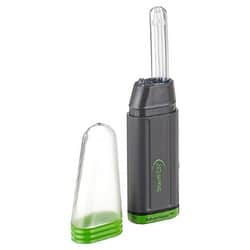
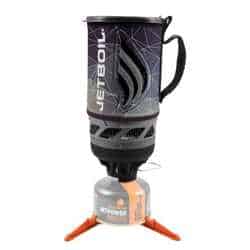



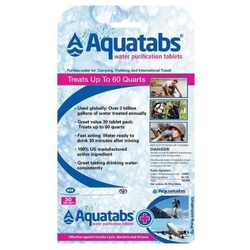
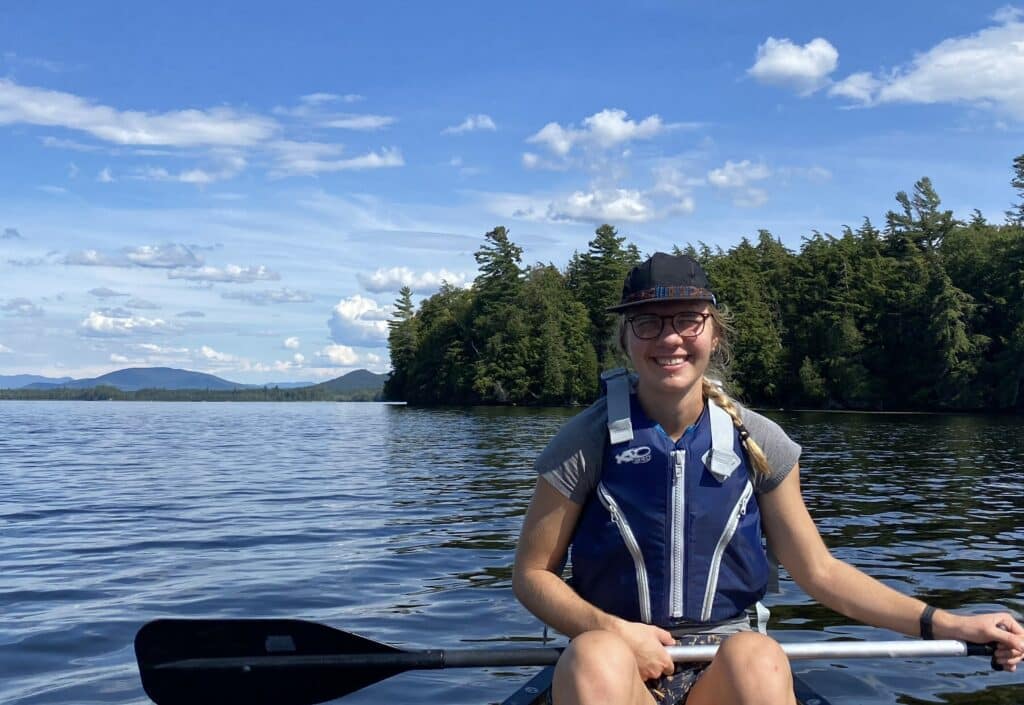
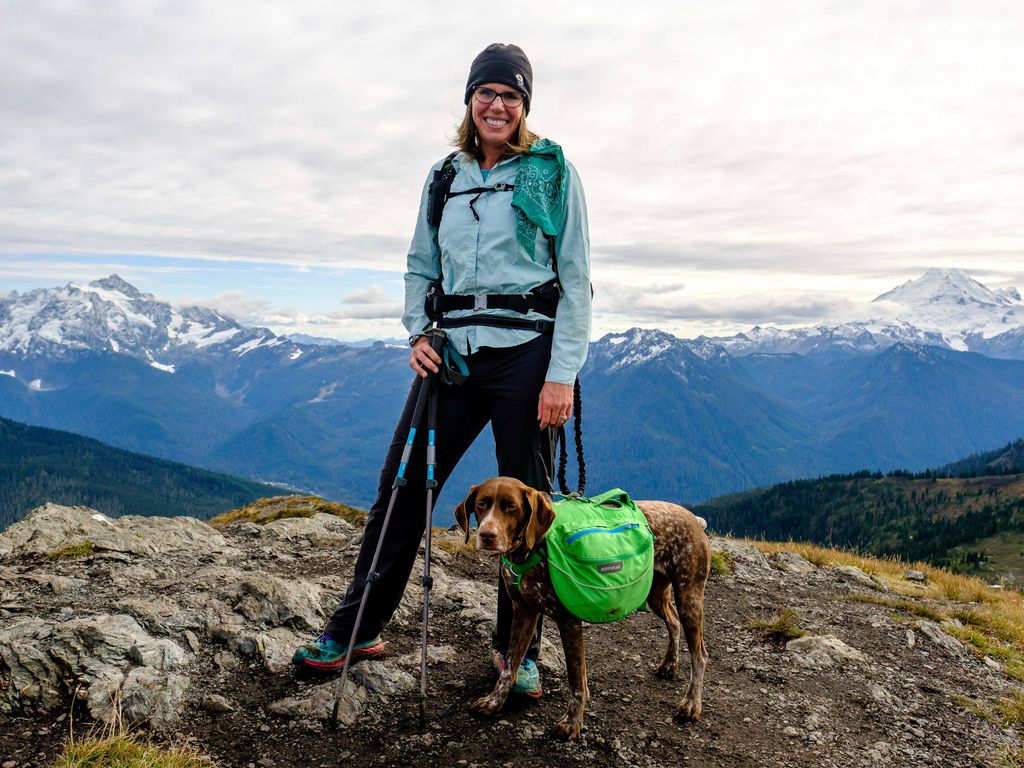

Leave a Reply